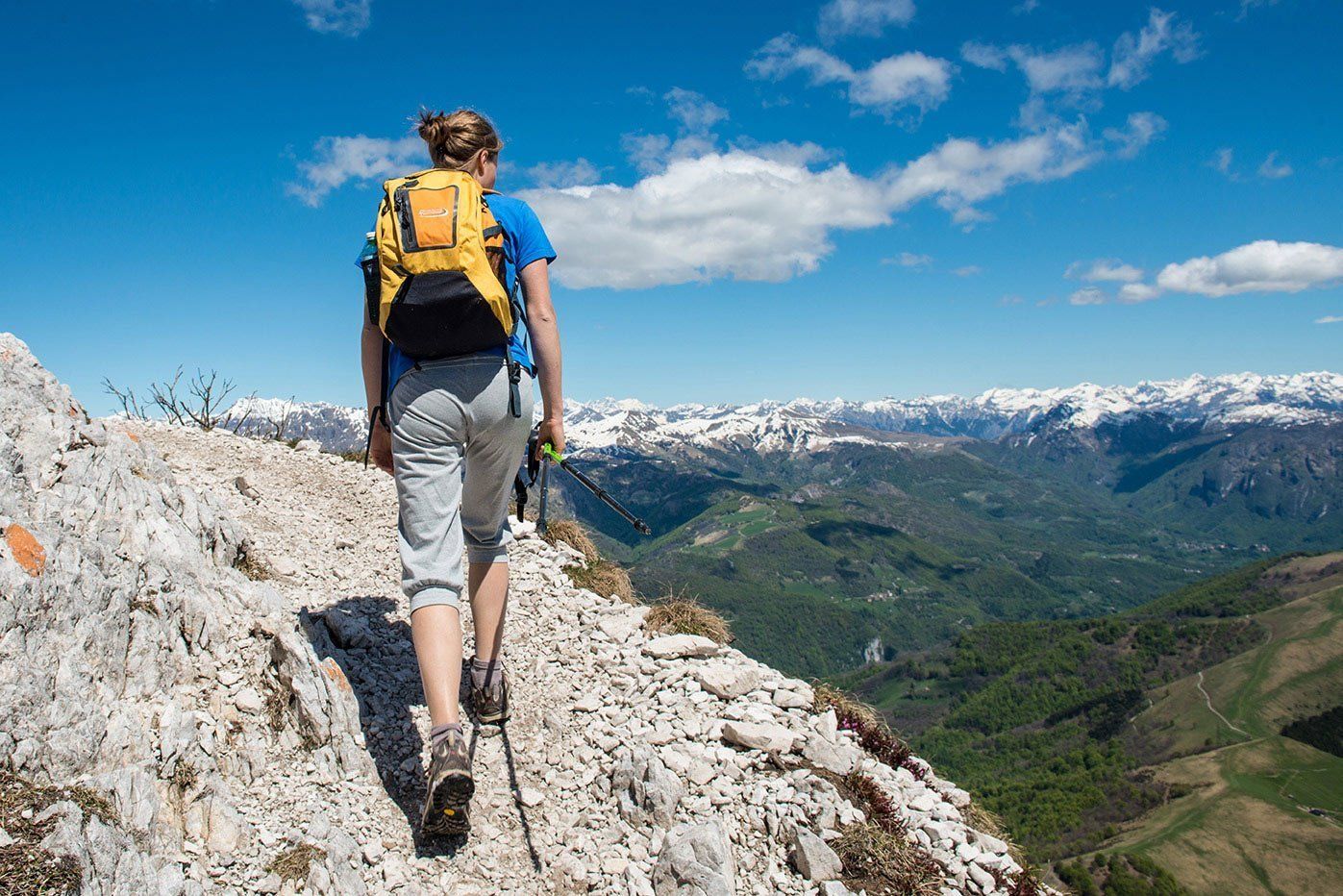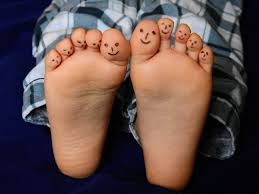19 Oct, 2016
By Matthew Collison
... And Frequently Asked Questions and Useful Links
After the correct orthoses have been selected and fitted to your footwear, the next stage is to start wearing the orthoses. Orthoses alter the way that forces act on the tissues in the feet and lower limbs, and can ultimately affect the way you walk. It is, therefore best to wear the orthoses in gradually to allow the tissues in you lower limbs and back to adapt. This could take a week or two. We usually recommend wearing them for no more than an hour the first day, increasing by an hour each day until you can wear them all day. In this period some aches and pains may be normal, however if these persist, remove the orthoses and try again the next day. Should these aches or pains continue, let your podiatrist know as soon as you can.
It is very important that you continue with any exercises that the podiatrist has advised during this period, even if you feel that the orthoses have alleviated your symptoms. Although relief can be instant, it can take up to 6 weeks to get a good response from your orthoses.
After 6 to 8 weeks, we like to book a review with you to see how you are getting on. At this short appointment we will check that the orthoses are well tolerated and that they continue to fit correctly to your feet and shoes. We will also review any exercises issued to ensure that you are performing them correctly. At this point we can make minor adjustments to your orthoses or exercise regime.
After around a year we like to review progress with our patients and their orthoses. These are usually standard appointments and it allows us to ensure that the orthoses are still working and that the prescription is still correct. We can also perform an additional assessment and modify our management plan to ensure that your needs and expectations are met. If you are no longer symptomatic, we will discuss whether you need to continue with your orthoses in the longer term, or whether they can be withdrawn altogether.
How do I look after them?
You do not have to do much to look after your orthoses, but it helps to keep them clean and dry. It is best to avoid submerging them completely, but if they do get wet, remove them from your shoes and leave to dry in a warm dry place, away from direct heat (not on a radiator!) or sunlight. Exposing them to direct heat may cause the plastics to deform rendering them useless. To clean your orthoses, remove them from your shoes and wipe them down with a damp cloth or baby wipe and leave to dry.
Sometimes, certain shoes can cause the orthoses to squeak when you walk. This is caused by the materials rubbing. If this happens, remove the orthoses pour some talc into your shoe and spread around and then replace the orthoses. If that does not work you can rub candle wax around the back edge of the orthoses at the heel.
If the top covers on your custom orthoses are looking tired or excessively worn, but the orthoses are still working, we can offer replacement of the covers for a fee.
Finally, make sure you keep the orthoses out of reach of your dog, as often they can mistake your expensive orthoses for a chew toy!
Orthotic myths and frequently asked questions
Do I really need orthotics?
- You might do, however not everyone needs orthoses, and not everyone will benefit from orthoses. Generally, they are a safe, effective treatment for many lower limb complaints. At Betafeet we see orthoses as only one part of a complete, induvidualised management plan which may include orthoses as well as activity modification, stretching and strengthening exercises, massage, manipulation, pain medications or steroid injections and footwear advice. Your podiatrist will only recommend orthoses after a full biomechanical assessment if they feel that they are appropriate and that you will benefit from them.
Don’t orthotics make muscles weak?
- In short, no. Currently, there is no compelling evidence to suggest that orthoses cause weakness in the muscles. Orthoses work by altering the forces acting on the foot and not by supporting or splinting the foot as a cast would, so it is unlikely that they would cause muscles to weaken. In the majority of cases orthoses are provided as part of a management plan which often include specific stretching and strengthening exercises.
Will they cure my flat feet or bunions?
- They might help reduce the pain and improve foot function but, generally they will not permanently cure bunions or flat feet. By reducing the associated pain and tissue stress caused by these conditions they may allow you to function better and maintain your active lifestyle
How long do they last?
It depends on the type of device, how often it is used, how heavy the patient is and what kind of activity it is used for. Generally softer, accommodative orthoses do not last as long as more rigid devices, and custom devices tend to last longer than prefabricated devices. You will be able to tell if the orthoses have worn out as they may appear worn or tatty and may not be relieving your symptoms any longer. As a general rule we tend to expect:
- Simple devices may last several weeks
- Prefabricated devices may last between 1 and 3 years
- Modular devices usually last 1 to 3 years
- Sidas devices usually last 1-5 years
- Firefly devices last far longer, the shells have a lifetime guarantee against breakage.
However, it must be noted that we can make no guarantee for the longevity of the devices (except Firefly carbon/polypropylene) as some patients subject their orthoses to heavier use than others, different conditions such as heat an moisture levels will also cause the glues and plastics to degrade over time at different rates.
They look bulky, will they fit into my shoes?
Orthoses will not fit into all shoes. Ballet pumps and high heels are particularly problematic, and we would often advise against wearing these types of shoes whether or not you have foot pain. Many foot complaints are caused or exacerbated by inappropriate footwear. We would recommend that you wear sensible shoes with adequate room, suitable fastening and supportive soles- running shoes are often ideal. We do however, understand that there are times where you can’t wear trainers or lace-ups, in which case we can offer slim or fashion orthoses to fit into your shoes. Custom orthoses can also be made to fit specific shoes such as running, golf, or cycling shoes as well as walking or ski boots. Your podiatrist can advise on the most appropriate orthoses for your needs.
Is there any discount for second/third pairs?
If at the time of casting you request additional pairs of orthoses we can offer a discount of £50 off Sidas or Firefly orthoses, however if these are requested at a later date, a subsequent casting appointment will be required and the orthoses will be charged at full price. We are unable to offer discount on additional pairs of simple, prefabricated or bespoke modular orthoses.
What happens if I lose/break my orthoses or the dog eats them?
Unfortunately, these things do happen. Firefly offer an insurance policy called SHIELD where orthoses are covered for loss/theft or damage. Refurbishment and re-covering is also covered, and the policy costs £55 for 2 years. Some fees may apply and the scheme is run by Firefly Orthoses and Betafeet Podiatry accepts no responsibility for any issues with this scheme.
Unfortunately, there is no insurance policy available for simple, prefabricated, bespoke modular or Sidas orthoses.
Will they work in my work/running/cycling/walking shoes?
Yes, we have models of orthoses suitable for most types of work or sports shoes. Ask your podiatrist who will be able to advise further.
References/ useful links:
http://www.firefly.ie/products/shield-insurance/
http://onlinelibrary.wiley.com/doi/10.1002/14651858.CD006801.pub2/full
http://onlinelibrary.wiley.com/doi/10.1002/14651858.CD002302.pub2/full
http://www.ncbi.nlm.nih.gov/m/pubmed/19530750/
http://www.nksportspodiatry.co.uk/blog/
http://www.sidassport.com/sidas-home-2-1.html
http://www.running-physio.com/mechanics/






